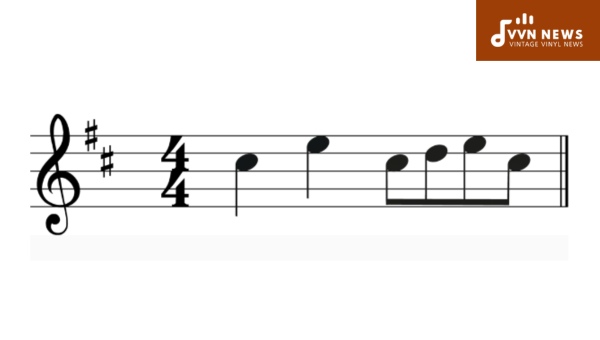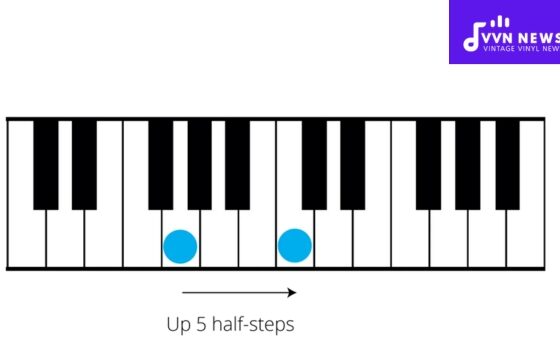Are you a musician or aspiring to be one? If so, you’ve likely come across the concept of transposing music.
Transposition is the process of changing the key of a piece of music without altering its structure or melody.
Today, we will be exploring how to transpose G to C? This is a common request, especially for guitarists who want to simplify their chord progressions or make it easier to play along with other musicians.
Transposing from G to C is a relatively straightforward process that can enhance your musical versatility and expand your repertoire.
Whether you’re looking to accommodate a vocalist’s range or adapt a song for different instruments, knowing how to transpose can be an invaluable skill in your musical journey.
In this article, I will guide you through the step-by-step process of transposing from G to C and provide helpful tips along the way. So, without further ado, let’s dive into the wonderful world of transposition!
What Is Transposition in Music?
Transposition is the process of changing the key of a piece of music while maintaining its original structure and melody.
It involves shifting every note, chord, and interval in a song up or down by a fixed number of steps or intervals. This allows musicians to adapt the music to different instruments, vocal ranges, or personal preferences.
Transposing music can be a powerful tool for musicians. It allows them to play in keys that are more comfortable for their instruments or vocals, and it can also help create different moods or tones in a composition.
Transposition adds flexibility and versatility to a musician’s repertoire and enables them to explore different musical possibilities.
Also Read: B Flat Minor Pentatonic Scale [Create Emotive Music In Minutes]
Why Transpose From G to C?

There are several reasons why you might want to transpose a piece of music from the key of G to the key of C:
- Simplifying Chord Progressions: The key of C is known for its simplicity, as it consists only of natural notes (no sharps or flats). By transposing a song from G to C, you can simplify complex chord progressions and make them easier to play, especially for beginners or musicians who prefer straightforward arrangements.
- Accommodating Vocal Range: If the original key of a song is too high or too low for a vocalist’s comfortable range, transposing it to a more suitable key can make it easier for them to sing. For example, if a song in the key of G has notes that fall outside a vocalist’s range, transposing it down to the key of C can ensure that they can hit all the necessary notes without straining their voice.
- Playing Along With Others: When jamming or performing with other musicians who might play different instruments, transposing a song can make it easier for everyone to play together in harmony. By moving from G to C, you align the song with common keys used on instruments like piano or keyboard.
- Experimenting With Different Tonalities: Transposing allows you to explore different tonalities and moods in your music. If you find that a song in G has an overly bright or cheery quality and you want to create a more somber or introspective feel, transposing it down to C can achieve that desired tone.
- Adapting Guitar Chords: Guitarists often transpose songs to fit their playing style and voice range. By moving from G to C, guitarists can utilize open chords more easily and create smoother transitions between chords.
Keep in mind that transposing will change the overall pitch of the song, so it’s important to consider the impact on the overall sound and feel before adjusting.
Also Read: A Flat Minor Pentatonic Scale [Unleash Subtle Tension In Your Music]
How Do You Identify the Key of a Song?
Identifying the key of a song is crucial before attempting any transposition. It provides a solid foundation for understanding the composition and determining how to transpose it correctly.
Here are some steps to help you identify the key of a song:
- Listen for the tonic note: The tonic note is the starting and ending point of a song. It is typically the most stable and resolved note in the melody. Listen attentively to find which note feels like “home” or provides a sense of resolution.
- Determine the major or minor tonality: Once you’ve identified the tonic note, listen to whether the song sounds major or minor. If it sounds bright and happy, it’s likely major; if it sounds melancholic or sad, it’s likely minor.
- Observe chord progressions: Pay attention to the chord progressions used in the song. Look for patterns such as frequently occurring chords or progressions that resolve to a specific chord.
- Check for accidentals: Accidental notes are those that appear outside of the key signature. Notice any sharps (#) or flats (b) used throughout the piece and take them into account when identifying the key.
- Consult sheet music or chord charts: If available, sheet music or chord charts can provide valuable information about the key of a song. Look for key signatures, chord notations, or any indications given by arrangers or composers.
By following these steps and actively listening to a song, you can typically identify its key accurately.
Remember that practice makes perfect, so try identifying keys in various musical pieces to hone your skills.
Once you’ve determined the original key, you can then proceed with transposing from G to C using appropriate techniques and tools.
How to Transpose G to C?

Transposing from G to C is a common and relatively easy process in music. It involves moving all the chords and notes in a song down a whole step.
Here’s a step-by-step guide on how to transpose from G to C:
Step 1: Identify the Key of the Song
Before transposing, it’s important to identify the key of the song you want to transpose. In this case, if the song is originally in the key of G, you can find this information by looking at the sheet music, and chord charts, or listening for the tonal center.
Step 2: Determine the Interval Distance
To transpose from G to C, you need to determine the interval distance between these two keys. In this case, it is a whole step down.
Step 3: Shift All Chords and Notes Down
Once you know the interval distance, you can start transposing. This involves shifting every chord and note in the song down by that interval distance. For example, if you have a G major chord (G-B-D), it will become a C major chord (C-E-G).
Step 4: Adjust Any Accidentals or Key Signatures
While transposing from G to C, make sure to adjust any accidentals (sharps or flats) or key signatures accordingly. For instance, if there are any F sharp notes in the original song, they would change to F natural in C.
Also Read: G Flat Minor Pentatonic Scale [Interesting Tones For Your Music]
Step 5: Practice and Refine
After transposing all chords and notes, take some time to practice playing or singing the newly transposed version of the song. Make any necessary adjustments or refinements as needed.
Transposing from G to C may take some time and practice initially but becomes easier with experience. There are also helpful online tools available that can assist with transposition calculations if needed.
What are the Tools to Help With Transposition?
Transposing music can seem like a challenging task, especially for novice musicians. However, there are several tools and techniques available that can make the process much easier.
Here are some helpful tools to assist you in transposing music from G to C:
- Chord Transposition Chart: A chord transposition chart is a useful reference that displays the chords in different keys. It allows you to quickly find the equivalent chords when transposing between keys. Online chord charts or mobile apps can be handy for this purpose.
- Transposing Software: There are numerous software programs available that allow you to transpose music with ease. These programs typically have built-in features that can transpose an entire song, including chords and melodies, at the click of a button.
- Music Theory Knowledge: Having a good understanding of music theory will greatly aid you in transposition. Being able to identify and recognize key signatures, scales, and intervals will enable you to transpose with confidence and accuracy.
- Transpose Wheels: Transpose wheels, also known as circle of fifths wheels, are physical tools that help visualize the relationships between different keys. By rotating the wheel to align your starting key (G) with your desired ending key (C), you can easily identify which chords or notes need to be adjusted.
- Online Resources and Forums: The internet is a valuable resource for musicians seeking assistance with transposition. There are countless websites, tutorials, and forums dedicated to sharing tips, tricks, and advice on how to transpose music effectively.
Remember, practice makes perfect when it comes to transposing music. The more you familiarize yourself with the process and tools available, the easier it will become over time.
Also Read: D Flat Minor Pentatonic Scale [Spice Up Your Melodies Today]
FAQs About transposing from G to C
How can I determine the key of a song?
To identify the key of a song, you can look for clues such as the song’s signature chord progression, the presence of sharps or flats in the sheet music, or the starting and ending notes of the melody.
Why would I want to transpose from G to C?
Transposing from G to C is often done to simplify chord progressions or make it easier to play along with other musicians. Additionally, transposing down from G to C can accommodate a vocalist with a lower vocal range.
Do I need any special training or knowledge to transpose music?
While it is helpful to have a basic understanding of music theory, you don’t need any extensive training or knowledge to transpose music. Practice and experimentation will go a long way in helping you develop this skill.
Are there any tools available to assist with transposition?
Yes, there are various tools available online that can help with transposition. These tools typically allow you to input the original key and desired key, and they will generate the transposed chord progression for you.
Are there any tips for simplifying the process of transposing from G to C?
When transposing from G to C, try using simplified chords like C, Dm, Em, F, G, and Am as substitutes for their more complex versions in the original key. This will make it easier for beginners or those looking for a simpler version of the song.
Conclusion
Transposing from G to C is a valuable skill for any musician. It allows you to adapt songs to fit your vocal range, simplify chord progressions, or play along with other musicians.
By following the step-by-step process I’ve outlined here and utilizing tools like a transposition chart or software, you can easily transpose G to C and expand your musical abilities.
Remember, practice makes perfect, so don’t be afraid to experiment and explore different keys for your favorite songs. Happy transposing!








